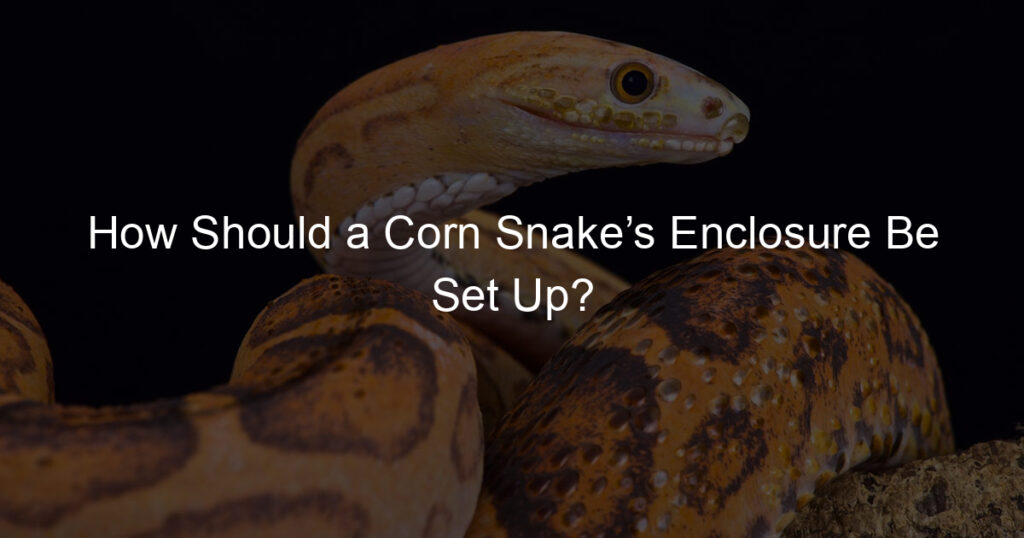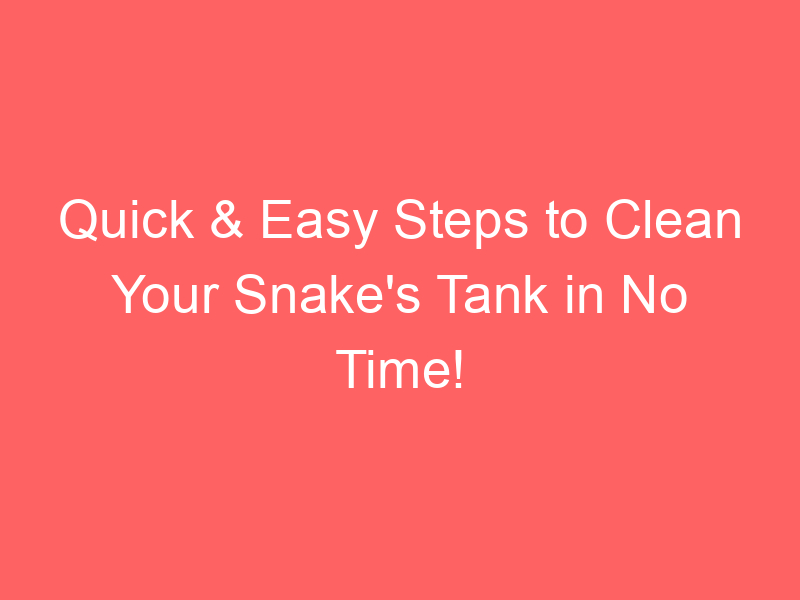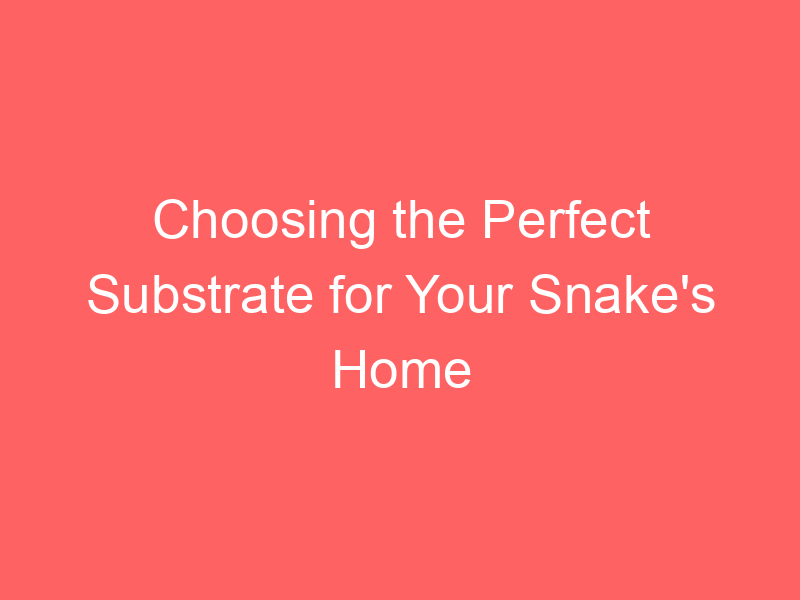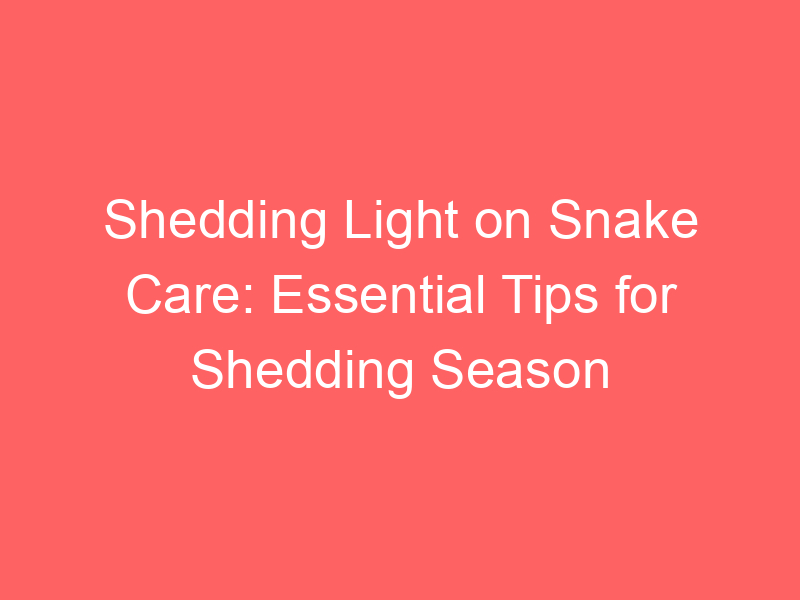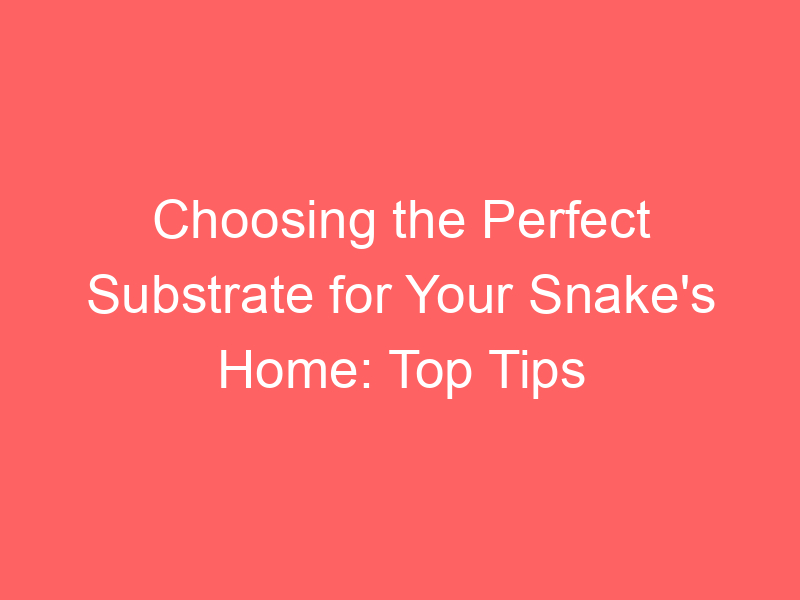Are you considering welcoming a pet corn snake to your house? Congratulations—corn snakes make delightful, curious, and undemanding companions. Plus, their intricate patterns of scales and colors are truly mesmerizing to look at!
Before you bring home a new scaly friend, however, it’s important to understand what kind of setup is needed for them. In this post, we’ll dive into the specifics of how to create an ideal enclosure for keeping your corn snake healthy and happy!
How do you set up a corn snake enclosure?
Setting up an enclosure for a corn snake is relatively straightforward. You’ll need a terrarium-style enclosure, as well as an appropriate substrate, such as newspaper, paper towels, or wood chips. It’s best to equip your enclosure with accessories like rocks and logs so your snake has an opportunity for activities such as burrowing and hideouts.
Make sure you have the necessary UVB light and heating equipment, depending on the climate in which your snake is living. Lastly adding a water dish is important to ensure that your snake remains hydrated at all times. With all these components set up, you’re ready to welcome your new corn snake into its new home!
What setup does a corn snake need?
Setting up a home for your corn snake doesn’t have to be complicated. To get them settled in, all you need is an enclosure with a secure lid, some substrate like aspen or newspaper to keep them warm, branches for climbing and exploring, and hiding spots.
You also need a water bowl large enough for your snake to soak in and a few pieces of wetted eco-earth or moss to provide humidity. Finally, add an appropriate heat source like an overhead lamp with good UVB exposure. Setting up the right environment ensures that your corn snake will thrive in its new home!
How do you set up a snake enclosure?
Setting up a snake enclosure is an important part of responsible snake ownership. It begins with selecting the right tank for your pet, taking into account the size and activity level of the species type, as well as the ambient temperature inside. To make sure your snake has somewhere to explore, hide, and bask in its light source, you’ll also need to include both live plants and log caves to allow for ample privacy.
Finally, be sure to line the bottom of the tank with substrates such as sphagnum moss or peat bark that’s free from toxins, smells neutral, and has enough moisture to absorb odors. With just a few supplies and a bit of setup time, you can create an inviting environment for your scaly companion!
What do you put in a corn snake habitat?
Setting up a habitat for your corn snake can be a fun and interesting task. The necessities for a healthy environment include substrates such as newspaper, aspen shavings, bark, mulch, or cypress mulch; items to provide privacy such as logs, rocks, cardboard tubes, or terrarium hiding caves; and furnishing materials like cork bark slabs or tree branches.
Temperature-wise, you will need a warmer side that’s around 80–85°F and a cooler side that’s 70–75°F. The thermostat should be placed along the warmer end of the cage so that it is easier to monitor the temperature level. You may also choose to incorporate an ultraviolet light into the habitat setup which helps simulate natural sunlight and allows your snake to benefit from its Vitamin D3 supplementation.
When it comes to decorating your corn snake’s home with plants and decorations, just be sure they are nontoxic if you are going down that route!
How to decorate a corn snake tank?
Decorating a corn snake tank doesn’t have to be complicated and can be a lot of fun. Start by thinking about the style and colors you want as well as how much available space there is in the tank. Natural woods, plants, vines, and branches are all great options when it comes to providing places for your snake to hide or explore.
This can help them feel secure in their environment and provide hiding spots that offer mental enrichment. Make sure to use decorations that are non-toxic and safe for snacking because snakes sometimes enjoy nibbling on their decor! In addition, consider adding a rock mound that your snake can climb if it wants to slither out of its enclosure for some basking time under UVB bulbs.
With some creative juju and careful consideration of your snake’s needs, you’ll have the perfect corn snake habitat ready before you know it!
Should I mist my corn snake enclosure?
Mist a corn snake enclosure? Sure, why not! It’s an easy and natural way to help increase the humidity level in the enclosure, which can make your pet feel more comfortable. Humidity provides moisture which allows the snake to shed easier – important for healthy skin and lifelong slitherin’!
Of course, it’s always best to check with a veterinarian or reptile specialist showing expertise in these animals to ensure misting is best for your specific situation. But if it is recommended, a gentle misting for 2-3 times per day should do the trick. Plus, what could be cuter than seeing your corn snake chilling in its humidified habitat? So go ahead and mist away – your shriveled-up slimy pal will thank you!
What should a corn snake habitat look like?
A corn snake’s habitat should provide everything it needs for a happy, healthy life! As these snakes are native to the southeastern United States, pet owners should aim to create a habitat that mimics the natural environment. This means providing some foliage as hiding spots, places where your pet can curl up and relax in peace.
In addition to plenty of places to hide, make sure you also provide flat surface areas and tall objects like branches or cork bark. These will help your snake develop its climbing skills. Also important is thermoregulation – understanding the difference between warm and cool parts of the enclosure and equipping it with the right light, heat, and UVB sources – so your corn snake can regulate its temperature without any problems.
Do corn snakes like soil?
Corn snakes seem to enjoy burrowing in dirt and soil, even though they’re not true diggers. In captivity, many will curl up in a patch of soft substrate or dirt that their owner provides and stay there until they’re ready to explore again.
Of course, they were originally found living in grasslands and forests, so a thin layer of natural soil is something they appreciate. But it’s always best to do your research on the exact substrate you should use for your particular species of corn snake — different breeds can have vastly different preferences when it comes to their bedding material.
What not to put in a snake enclosure?
When you bring home a new pet snake, setting up its enclosure can be exciting! But before you get too far into it, there are some items that should stay out. Live plants, although they offer natural decoration, can harm your snake. They are difficult to clean and may contain toxins or parasites that could make your snake sick.
Also, keep sharp objects away from the enclosure; even a small puncture on your snake’s skin can have dire consequences. If a substrate is required to line the enclosure floor, avoid any chemical-treated or scented types as they may cause health issues for the animal. Lastly, refrain from offering water bowls since many species of snakes ingest their water by licking it off leaves and other surfaces in the enclosure instead of drinking from a bowl.
By avoiding these items in your reptile’s habitat, you’ll help them stay healthy and happy for many years to come!
Conclusion
Making sure your corn snake is given the best home possible is key to keeping them healthy and content. With so many types of enclosures available, there is a perfect one that meets all of your needs. By providing the right amount of space, substrate, and temperature, you can be assured your corn snake will enjoy its home and live a long and happy life.
Therefore, it’s important to take into consideration your specific needs when it comes to setting up an enclosure for your corn snake. Be sure to keep in mind desired temperatures, size constraints, or any special features you may need as you create the perfect environment for your pet.
A little effort goes a long way- not only do snakes love spending time in their enclosures, but it’s also beneficial to their health!

